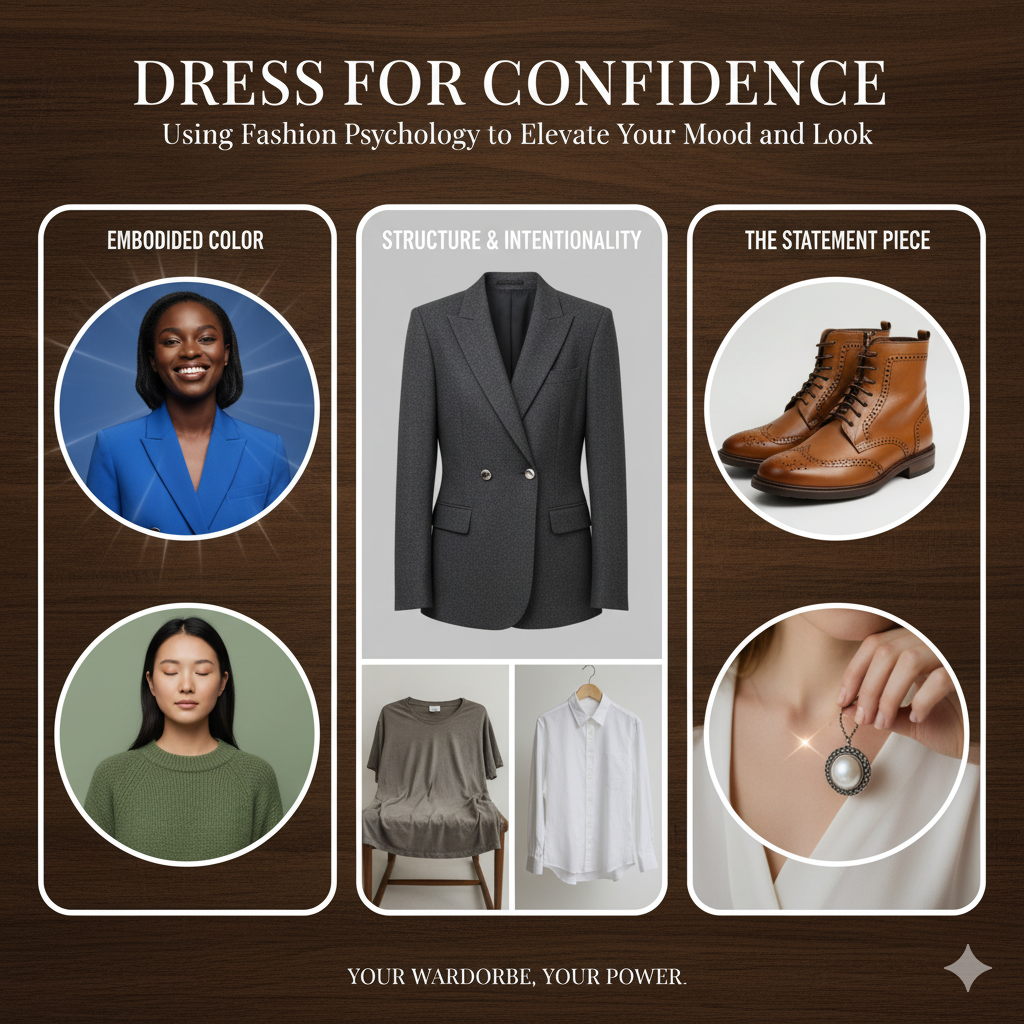
We usually choose clothes only for their comfort or cleanliness, viewing fashion as a flimsy pastime or an essential function. But what if your attire had a profound and imperceptible impact on your emotions, conduct, and even cognitive abilities? It’s not only about looking good; it’s about enclothed cognition, the scientific hypothesis that clothes gradually change one’s thinking and conduct. If you understand and intentionally use fashion psychology, your wardrobe may be converted from a collection of fabrics into a powerful, readily available tool for increasing your self-esteem and influencing your everyday fate.
When using clothing as a psychological instrument, the first step is to choose colors and textures that complement the mood you wish to portray. Colors are associated with strong psychological effects. For example, wearing a vibrant shade like electric cobalt can instantly change your internal state into one of confidence by communicating vitality and optimism. Grounding neutrals, such as desert clay or moss green, might, however, help you feel focused and at ease when you need them. Color is important, but so is texture. While silk or cashmere are luxuriously soft and can provide peaceful ease, a structured jacket can help you feel more put together and professional. Make decisions that will help you achieve the mental state you want to have for the day.
Next, pay attention to fit and intentionality. Untidy, wrinkled, or just worn-out clothing gives the impression that you and other people are disorganized and uninterested. On the other hand, dressing well-groomed, well-tailored, and in good shape conveys competence and respect. The “Single Statement Piece” technique is a terrific psychological trick: choose one thing that you genuinely adore and feel amazing wearing to anchor your ensemble, like a fine leather boot or a gorgeous piece of family jewelry. This one item improves the overall ensemble’s perceived quality and gives you a strong, instant boost in self-esteem. It also changes the way you walk, your posture, and your presence.
Dressing intentionally is ultimately a self-leadership and self-care practice. You are setting yourself up for success even before you leave the house. Your morning routine can be transformed from a hassle into a psychological preparation by carefully choosing colors that give you more energy, fittings that convey confidence, and clothing that truly makes you feel wonderful. When you use your wardrobe as a toolkit to enhance your confidence, you’ll discover that feeling “well-dressed” really means being “well-prepared” to face the world.
